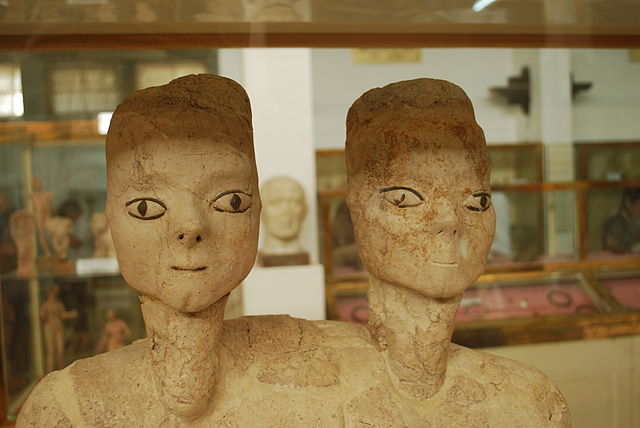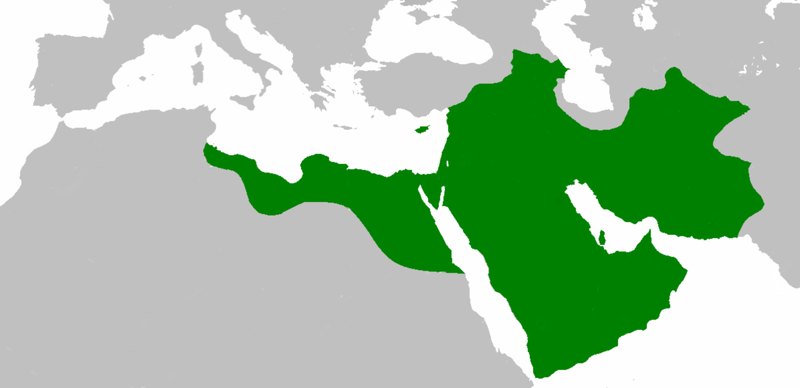-
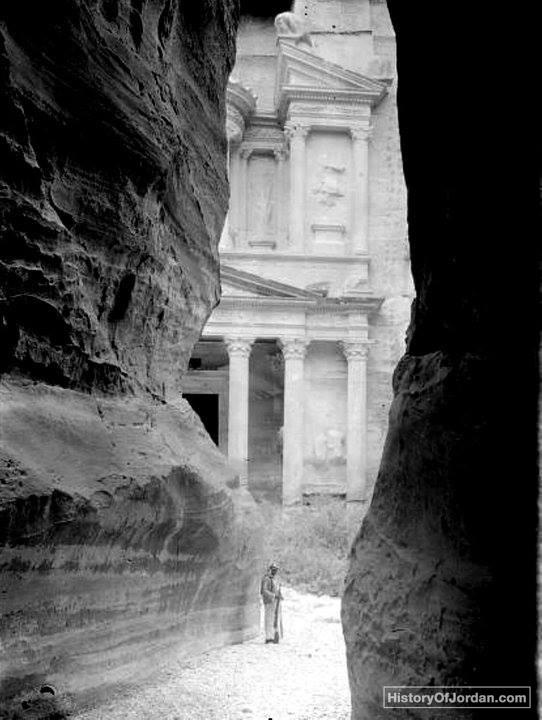
Over 90,000 Years of History
The earliest archaeological finds in the land of Jordan date back to around 90,000 before present, during the Palaeolithic Age. Physical proof of that era in this region is not found in the form of architectural remains, but as lithic tools, which indicate the presence of civilization in Jordan in pre-historic times. Thus, the land of Jordan bares testimony to human activities since the earliest archaeologist phases.
-

-
-
Ain Ghazal was settled in about 7200 B.C., in the Neolithic period, which is divided into Pre-Pottery Neolithic (8500–5500 B.C.) and Pottery Neolithic (5500–4500 B.C.). Ain Ghazal flourished in the Pre-Pottery Neolithic for almost 2,000 years. By 6200 B.C. the settlement had grown to occupy nearly 120 dunums. Indeed, Ain Ghazal was one of the largest villages in the Neolithic Near East.
-

-
During the Chalcolithic (4500-3800 B.C.), copper was smelted for the first time. It was put to use in making axes, arrowheads and hooks, although flint tools continued to be used for a long time. Chalcolithic man relied less on hunting than in the Neolithic, and focused more on sheep and goat-breeding and the cultivation of wheat, barley, dates, olives and lentils. In the desert areas the lifestyle was probably very similar to that of modern Bedouins.
-

Sites destroyed in the Bronze Age collapse around 1200 B.C.E
-
By about 3800 B.C., Jordan had developed a relatively urban character. Many settlements were established during the Early Bronze Age (3800-2000 B.C.) in various parts of Jordan, both in the Jordan Valley and in the mountains. Many of the villages built during this time were fortified to protect the inhabitants. Water systems were erected and water was channeled from one place to another. During the Middle Bronze Age (2000-1550 B.C.), handcrafts developed and far-trade was enhanced and people began to move around the Middle East to a far greater extent than before. Trading continued to develop between Egypt, Syria, Arabia, Palestine and Jordan, resulting in the refinement and spread of civilization and technology. The creation of bronze out of copper and tin resulted in harder and more durable axes, knives and other tools and weapons. It seems that during this period large and distinct communities arose in parts of northern and central Jordan, while the south was populated by a nomadic, Bedouin-type of people known as the Shasu. However, the Late Bronze Age was brought to a mysterious end around (1200 B.C.), with the collapse of many of the Near Eastern and Mediterranean political entities. The main cities of Mycenaean Greece and Cyprus, of the Hittites in Anatolia, and Syria, Palestine, and Jordan were destroyed. It is thought that this destruction was wrought by the Sea Peoples from the Aegean and Anatolia region who were eventually defeated by the Egyptian pharaohs Merneptah and Ramses III.
-

The spread of Iron Age kingdoms
-
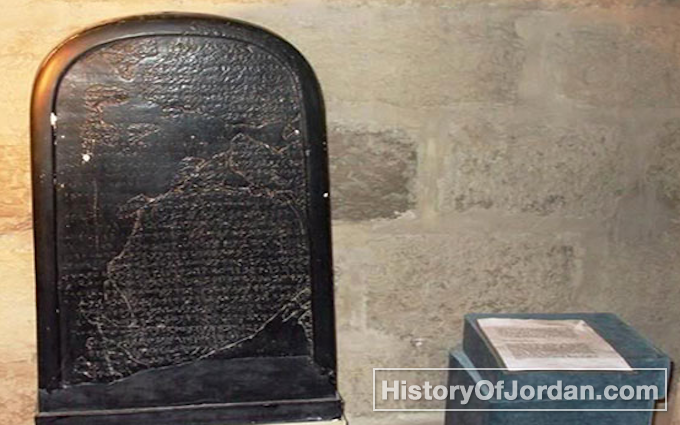
King Micha historic plate. Kingdom of Edom
The Iron Age (1200-550 B.C.) saw the development and consolidation of three new political entities in Jordan: Edom in the south, Moab in central Jordan, and Ammon in the northern mountain areas. To the north in Syria, the Aramaeans made their capital in Damascus. This period saw a shift in the level of power from individual city-states to extended semi-states. One possible reason for the growth of these local powers was the growing importance of the trade route from Arabia, which carried gold, spices, and precious metals through Amman and Damascus up to northern Syria. -
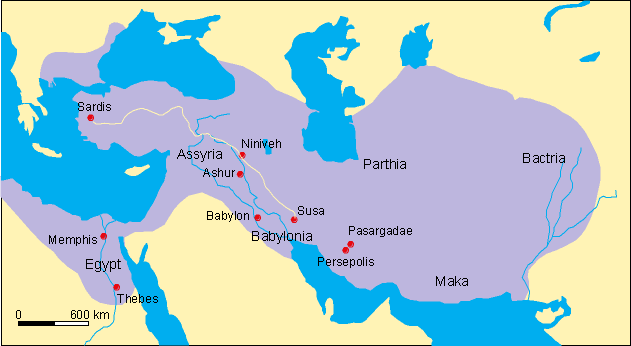
Persian Empire
In 539 B.C., the Persians conquered the Babylonians and took over the territories that were under their control. The archaeological evidence from this period is still poor, however, Jordan was most probably part of the Persian Abr Nahrain province that also included parts of Palestine. Persian provinces enjoyed a self administration status and were usually ruled by local dynasties -

The Hellenistic Period
About 330 B.C., the army of Alexander the Great took over the control on the Levant, including Jordan. After his death, the southern Levant was subject of conflict between the Seleucids in Syria and the Ptolemies in Egypt, until 197 B.C., when the Seleucids had the upper hand. The Hellenistic culture was distinguished by a mixture of Greek and local elements. Most regions under the Seleucids rule enjoyed a relative independence, as demonstrated, for example, by the rule of the Nabataeans. -
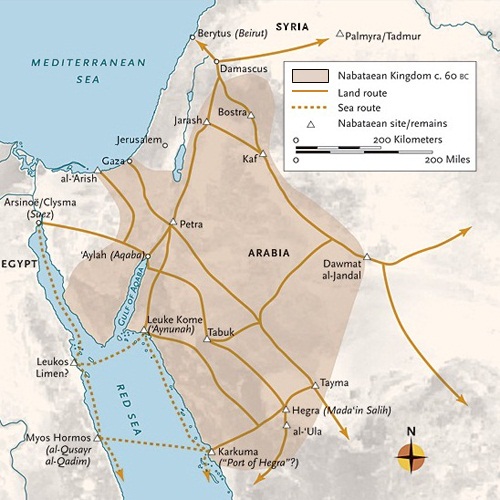
Nabataean kingdom map
-
Petra city
The Nabateans were exceptionally skilled traders, facilitating commerce between China, India, the Far East, Egypt, Syria, Greece, and Rome. They dealt goods such as spices, incense, gold, animals, iron, copper, sugar, medicines, ivory, perfumes, and fabrics. From its origins as a fortress city, Petra became a wealthy commercial crossroads between the Arabian, Assyrian, Egyptian, Greek, and Roman cultures. Control of this crucial trade route between the upland areas of Jordan, the Red Sea, Damascus, and southern Arabia was the lifeblood of the Nabataean Empire. -

Roman Empire Map
-
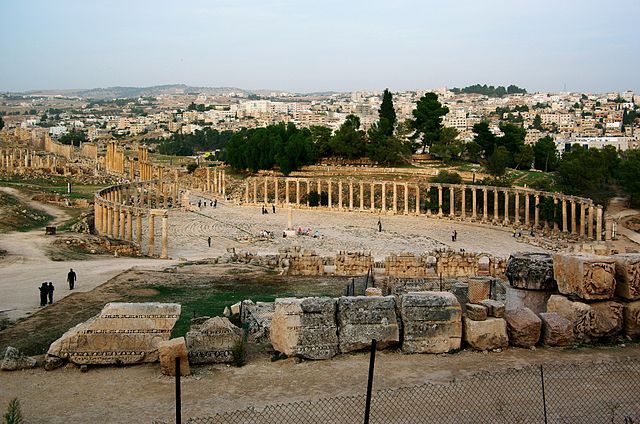
Jerash, Jordan
Pompey’s conquest of Jordan, Syria, and Palestine in 63 B.C. inaugurated a period of Roman control which lasted for four centuries. In northern Jordan, the Greek cities of Philadelphia (Amman), Gerasa (Jerash), Gadara (Umm Qais), Pella and Arbila (Irbid) joined with other cities in Palestine and southern Syria to form the Decapolis League, a fabled confederation linked by bonds of economic and cultural interest. This period witnessed the emergence of Christianity and the end of the Nabataean state, when it was annexed by the Romans in AD 106. The Roman period in the east came to an end, after the Roman Empire was divided in two parts, a western with Rome as its capital and an eastern with Byzantium in Anatolia as its capital. -

Byzantine Empire map
-
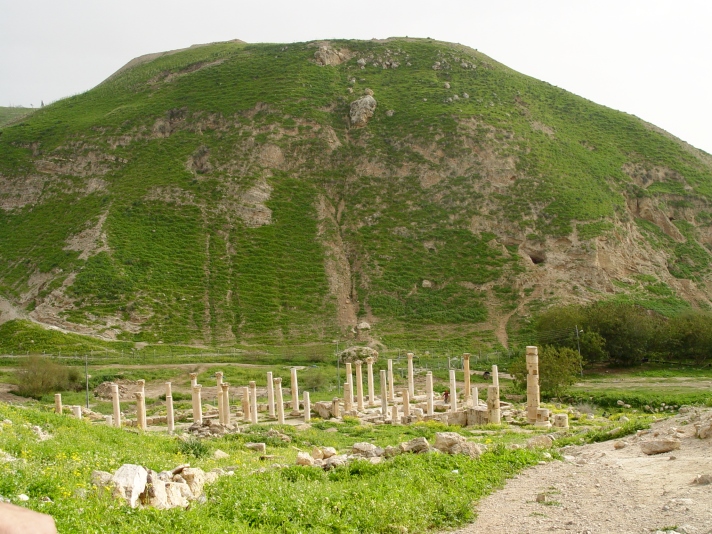
Byzantine church ruins in Pella, Jordan
The Byzantine period dates from the year 324 AD, when the Emperor Constantine I founded Constantinople (Istanbul) as the capital of the Eastern Roman, or Byzantine, Empire. Constantine converted to the growing religion of Christianity in 333 AD. In Jordan, however, the Christian community had developed much earlier: Pella had been a center of refuge for Christians fleeing persecution in Rome during the first century AD. The fifth and sixth centuries AD witnessed a remarkable increase in religious building projects, especially churches. -

Battle of Mu’tah map
-
The Battle of Mu’tah was fought in 629 (8 Hijrah), near the village of Mu’tah, east of the Jordan River and Karak, between the forces of the Prophet Muhammad (PBUH) and the Byzantine army. For the Empire have killed the messenger whom the Prophet (PBUH) sent to the king of Bostra to call him to Islam. Three thousand men facing two hundred thousand fighters under the command of Khalid bin Waleed. He was able to maintain his heavily outnumbered army of 3,000 men against a massive Byzantine army of 200,000 and Ghassanid Arabs in what would be known as the Battle of Mu’tah. Khalid assumed command of the Muslim army at the crucial moment, and turned what would have been a bloody slaughter into a strategic retreat and saved the Muslim army from total annihilation. During nightfall, Khalid sent some columns behind the main army, and the next morning prior to the battle they were instructed to join the Muslim army in small bands, one after the other, giving an impression of a fresh reinforcement, thus lowering the opponent’s morale. Khalid somehow stabilized the battle lines for that day, and during the night his men retreated back to Arabia. Believing a trap was waiting for them, the Byzantine troops did not pursue.
-
The Rashidun Empire reached its greatest extent under Caliph Uthman, in 654
After the widespread of Islam in the Arab Peninsula, the adherent of the new religion moved forth to spread the word of Islam in the neighboring countries. Jordan witnessed the first crucial battles, Fihl and Yarmouk. These took place while the Byzantines were preoccupied with the Sassanians, which diverted their attention away from what was happening in the Arabian desert. -

The Battle of Yarmouk
The Battle of Yarmouk , in 15 Hijri (636 AD), occurred along the Yarmouk River near the city of Irbid in northern Jordan. After capturing Alhira (Iraq) and Damascus (Syria), the Muslim army under the second caliph , Umar ibn Alkhattab, progressed in one of the first major battles to occur outside the Arab Peninsula paving the way for Islamic expansion. Four years after Prophet Muhammad’s death, under the command of Khalid bin Alwaleed, the outnumbered Arab army fought against the Roman army of the Byzantine Empire and decisively conquered the region in a battle that lasted for six days. Using strategic military tactics on the distinct terrain and with the help of women, children, and local volunteers, the victory marked the beginning of Muslim dominance and the defeat of the Byzantine Empire. -
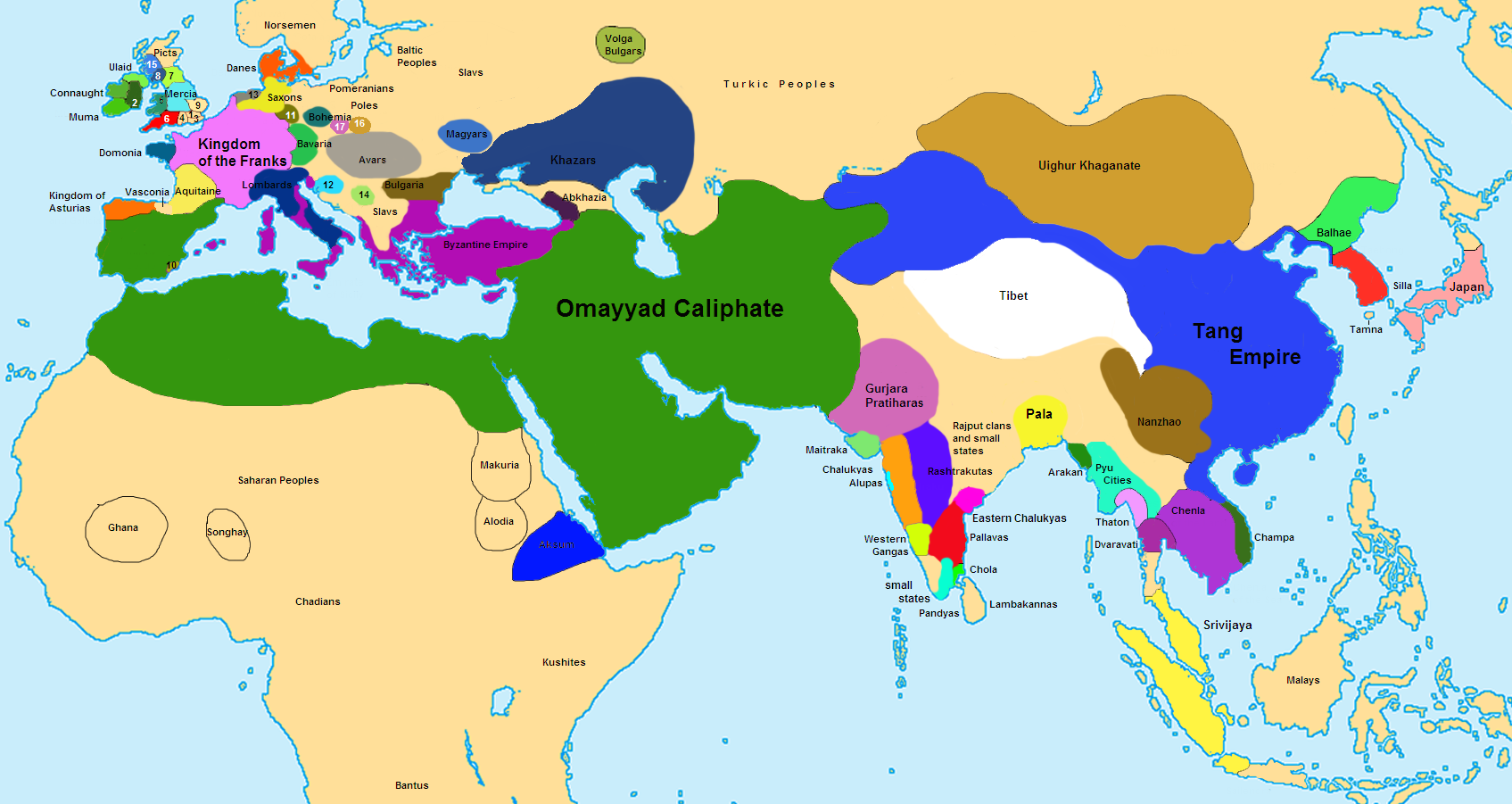
The height of the Umayyad Caliphate
-
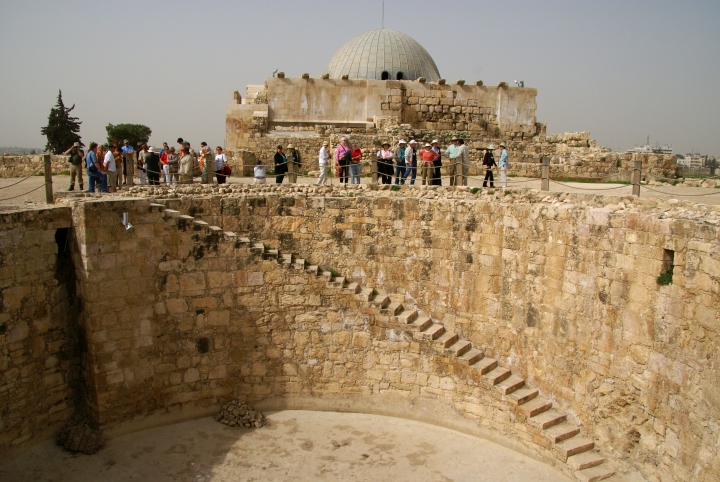
Umayyad Palace. Jordan
The Muslims wasted no time in taking Damascus, and in 661 AD proclaimed it the capital of the Umayyad state. Jordan prospered during the Umayyad period due to its proximity to the capital city of Damascus. Its strategic geographic position also made it an important thoroughfare for pilgrims venturing to the holy Muslim sites in Arabia. As Islam spread, the Arabic language gradually came to supplant Greek as the main language. Christianity was still widely practiced through the eighth century. -

The Abbasid Caliphate
-
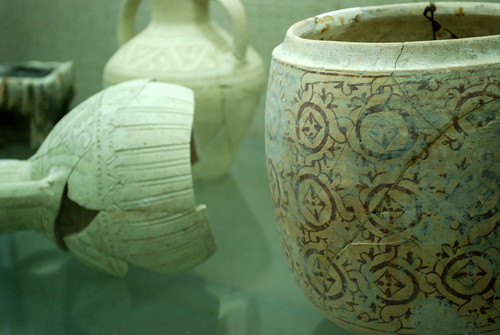
The Citadel – Archaeological Museum – Abbasid Pottery – Amman, Jordan
A powerful earthquake rocked Jordan in AD 747, destroying many buildings and perhaps contributing to the defeat of the Umayyads by the Abbasids three years later. The Abbasids established their capital in Baghdad, leaving Jordan a provincial backwater far from the center of the state. The desert castles were abandoned, and Jordan now suffered more from being neglected than from the invading armies. However, recent excavations have shown that the population of Jordan continued to increase, at least until the beginning of the 9th century AD. -

Map of the Fatimid regions
-
The Fatimid state was a Shiite state, which spanned a large area of North Africa, from the Red Sea in the east to the Atlantic Ocean in the west. The dynasty ruled across the Mediterranean coast of Africa and ultimately made Egypt the centre of the caliphate. At its height, the caliphate included in addition to Egypt the areas of the Maghreb, Sudan, Sicily, the Levant and the Hijaz.
-

Ayyubid Sultanate
-

Ayyubid Sultanate
Salah Eddin founded the Ayyubid dynasty, which ruled much of Syria, Egypt and Jordan for the next eighty years. In the year 1258 AD, an invasion of Mongols swept across much of the Near East. The marauding invaders were eventually turned back in 1260 AD by the Mamluk Sultan Baybars, who fought a successful battle at Ain Jalut. The Mamluks, who were from Central Asia and the Caucasus, seized power and ruled Egypt and later Jordan and Syria from their capital at Cairo. The unification of Syria, Egypt and Jordan under the Ayyubids and Mamluks led to another period of prosperity for Jordan, as it once again occupied a key position between its two larger neighbors. Castles were constructed or rebuilt, and caravanserais were built to host pilgrims and strengthen lines of communication and trade -

Ottoman Empire src:Encyclopaedia Britannica
-
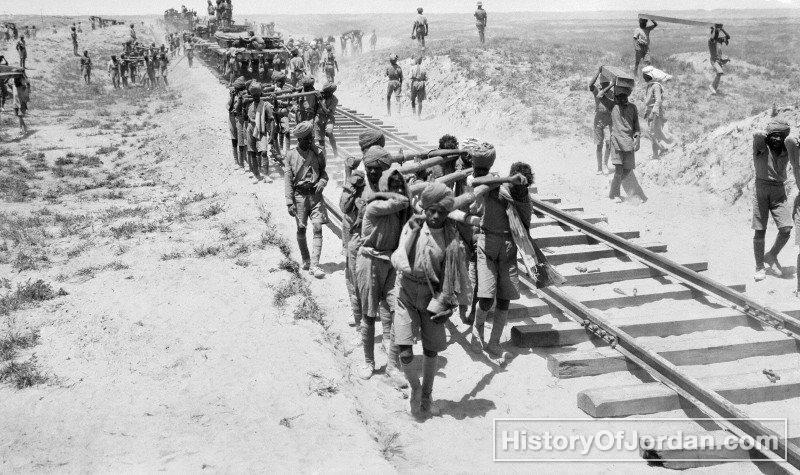
Building the Hijaz railway
The four centuries of Ottoman rule (1516-1918 AD) were a period of general stagnation in Jordan. The Ottomans were primarily interested in Jordan in terms of its importance to the pilgrimage route to Mecca al-Mukarramah. They built a series of square fortresses—at Qasr al-Dab’a, Qasr Qatraneh, and Qal’at Hasa—to protect pilgrims from the desert tribes and to provide them with sources of food and water. However, the Ottoman administration could not effectively control the Bedouin tribes. Over the course of Ottoman rule, many towns and villages were abandoned, agriculture declined, and families and tribes moved frequently from one village to another. The Bedouins, however, remained masters of the desert, continuing to live much as they had for hundreds of years. -

Republics_of_the_North_Caucasus
-

Islamic Circassian Association
After the declaration of the tsarist Russian war on the Caucasus region, and through the plots of the Ottoman Empire. People began migrating from that region to Jordan and other countries. Circassians came to Jordan in 1864 and Chechens in 1902 and they integrated with people living in Jordanian villages and cities and contributed to the life of Jordanians in various ways -
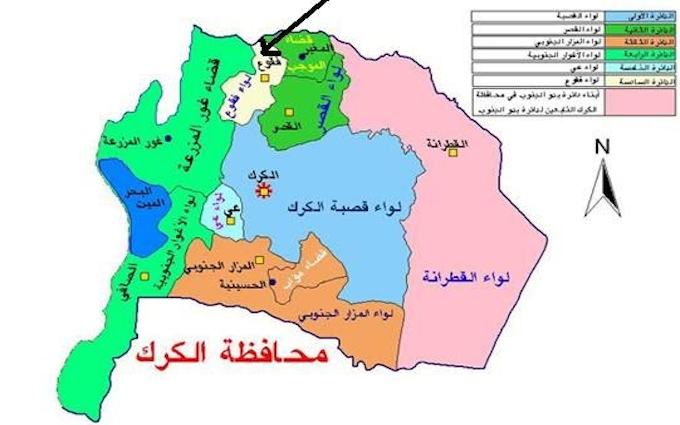
Al-Karak map
-

Ottoman Empire hanging al-karak men after the revolution
After the Druze Mountain and Horan revolution that started against the mandatory recruitment process, Turkey sent Commander Sami Pasha Peda in order to enforce the recruitment process. Consequently, the tribal leaders of Karak met and agreed to reject the orders of Sami Pasha. Under the circumstances, the elders chose 10-23-1910 as a beginning date to revolt in al-Karak and regain its locations from the Turkish army resulting in a total loss of more than 150 Turkish soldiers along with all of the departments and centers of the empire. After reaching a dangerous stage, the Ottoman empire sent military forces composed of six lines of infantry soldiers, to suppress the revolt and prevent it from spreading to the rest of the region. They headed to Kerak and camped on the outskirts of the eastern city beside the castle. As a result, the rebels withdrew from the city after they realized that they were not a match of the army before them. -

Shaykh Bandar bin Faris Pasha al-Majali
Shaykh Bandar bin Faris Pasha al-Majali, and the wife of Rvivan Pasha and the mother of Marshal Habis al-Majali, and the sister tribal leader Shlash bin Faris Majali. The first female political prisoner in the Middle East, and her sister Sheikha mishkes Fares Pasha al-Majali the wife og the Knight Qader Bin Saleh Al-Majali, the head leader of the Karak revolution in 1910. was imprisoned in luminosity during the revolution of al-Karak. -
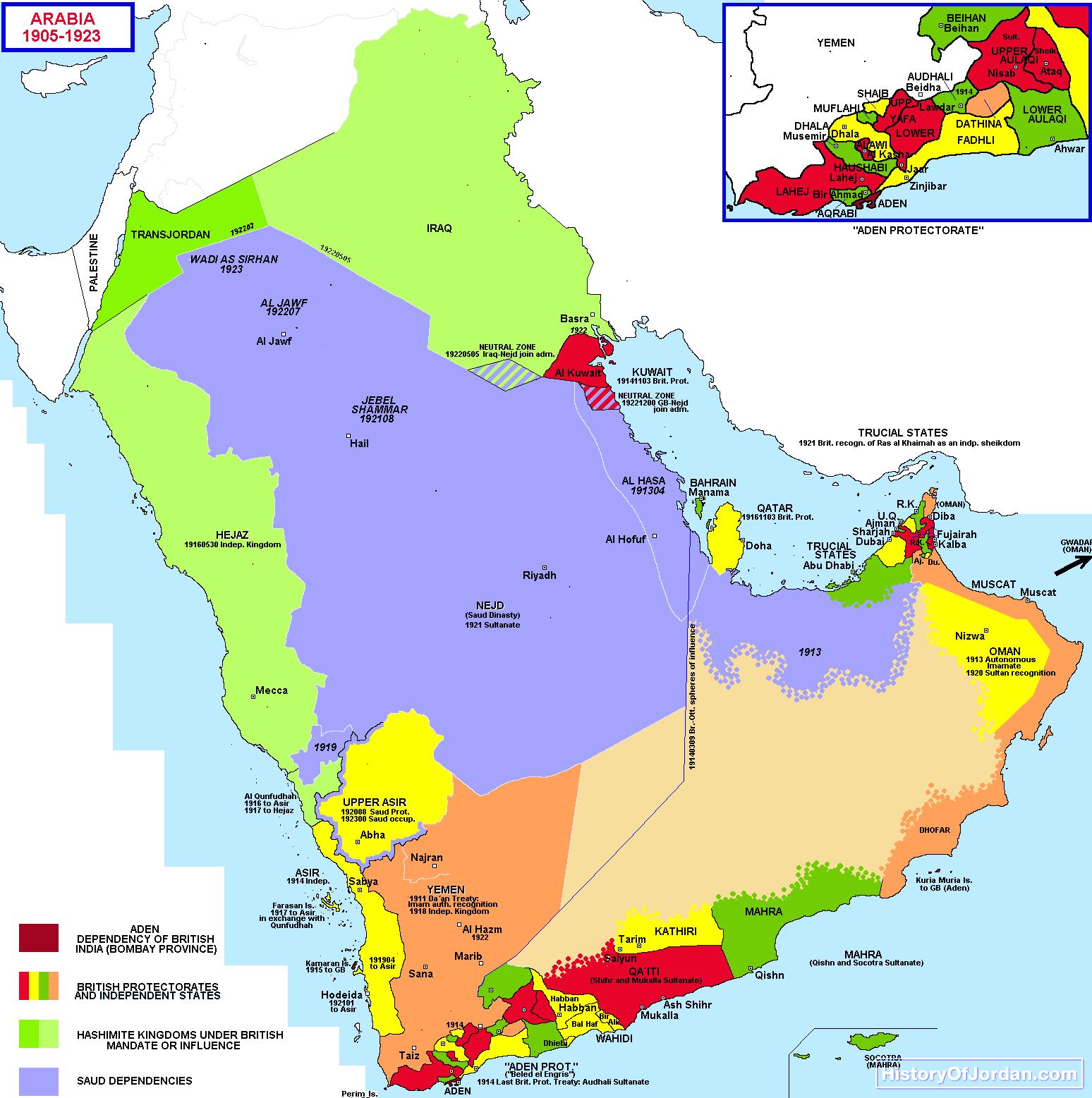
Green color, Hashemite Family
-

Sharif Husayn
Much of the trauma and dislocation suffered by the peoples of the Middle East during the 20th century can be traced to the events surrounding World War I. During the conflict, the Ottoman Empire sided with the Central Powers against the Allies. Seeing an opportunity to liberate Arab lands from Turkish oppression, and trusting the honor of British officials who promised their support for a unified kingdom for the Arab lands, Sharif Hussein bin Ali, Emir of Mecca and King of the Arabs (and great grandfather of King Hussein), launched the Great Arab Revolt. After the conclusion of the war, however, the victors reneged on their promises to the Arabs, carving from the dismembered Ottoman lands a patchwork system of mandates and protectorates. While the colonial powers denied the Arabs their promised single unified Arab state, it is nevertheless testimony to the effectiveness of the Great Arab Revolt that the Hashemite family was able to secure Arab rule over Transjordan, Iraq and Arabia. -

-
Auda ibu Tayi (1874 – 1924) was the shaikh of the Howeitat tribe of Bedouin Arabs at the time of the Great Arab Revolt during the First World War. The Howeitat lived in what is now Saudi Arabia, and Jordan.. The Huwaitat tribe was at the time of their prime power the thing that pushed Sharif Hussein bin Ali to ask for help in the war against the Ottoman Turks. For He aspired to get rid of the Turks, and for the Arabs govern themselves by the help of the Caliph Al Hussein Bin Ali.After joining the Arab revolution 1916 he manged to regain the city of Aqaba and its castle. And after the liberation of Aqaba Sharif Hussein bin Ali gave him a sword as a gift, and Prince Faisal described him in a letter to Prince Zeid 1918, saying that Odeh Abu Tayeh is a close friend to my soul, and I consult him with everything.
-

Shaykh Majid al-Adwan
-
was the largest uprising against the British mandate and the newly installed Transjordanian government, headed by Mazhar Ruslan, during its first years. The rebellion was initiated in the early months of 1923, under the slogan Jordan for Jordanians, but was quickly crushed with the assistance of the British RAF. As a result, the revolt leader, Sultan al-Adwan, fled to Syria with his sons. To come back later to Jordan after King Abdullah I gave all the rebels governmental remission.
-
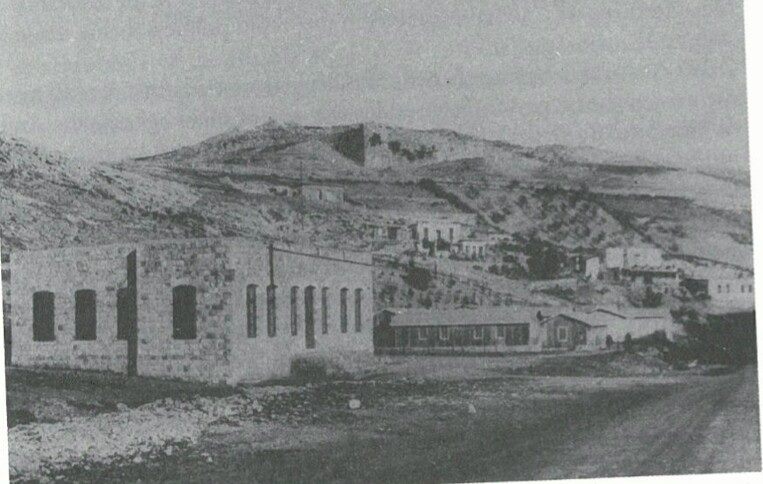
Parliament in Amman 1933
-
The Basic Law for the Year 1928 gave the Transjordan Emirate the constitutional legitimacy to run and manage the affairs of the country. Accordingly, an elections law was established to elect the first Legislative Council. Five Legislative Councils were elected during the period of the Emirate. The first Legislative Council was establish in 1929, and the last on in 1947. The Parliament of Jordan is the bicameral Jordanian national assembly: Majlis al-Umma. Established by the 1952 Constitution, the legislature consists of two houses: the House of Senate (Majlis al-Ayan) and the House of Representatives (Majlis al-Nuwab). The House of Senate has 75 members, all of whom are directly appointed by the King, while the House of Representatives has 150 elected members, with nine seats reserved for Christians, three are for Circassian and Chechen minorities, and fifteen for women. The Constitution ensures that the Senate cannot be more than half the size of the House of Representatives. The members of both houses serve for four-year terms. The number of Senators was increased to 75 in October 2013, after the House of Representatives saw a rise in the number of Representatives earlier the same year
-
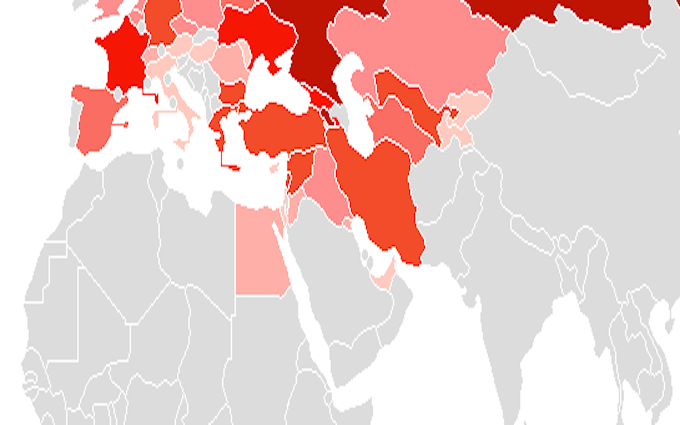
Armenians moving into Jordan and other countries
-
Ethnic Armenians living within the current Hashemite Kingdom of Jordan. There are an estimated 3,000 Armenians living in the country today. with an estimated 2,500 of them being members of the Armenian Apostolic Church, and predominantly speak Western Armenian dialect. Armenians make up the biggest majority of non-Arab Christians in the country. There were about 6000 Armenians living in Jordan during the period 1930-1946. After the 1948 Arab–Israeli War, a new wave of immigrants came from Palestine to Jordan increasing the number of Armenians to about 10,000
-
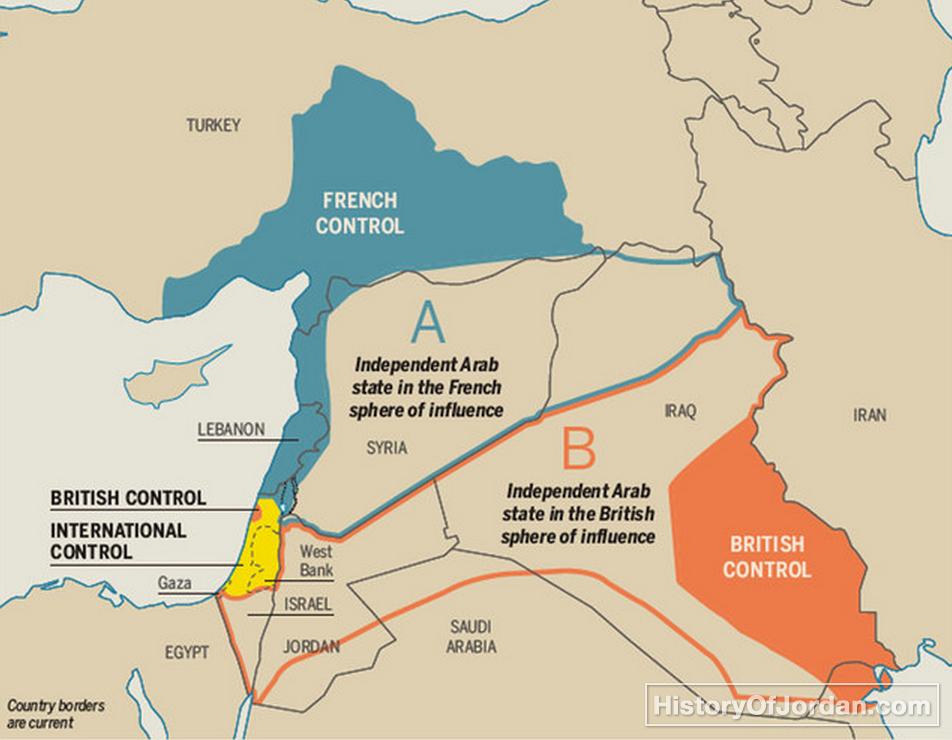
The Sykes-Picot treaty that carved up the Middle East src:historyofjordan.com
-
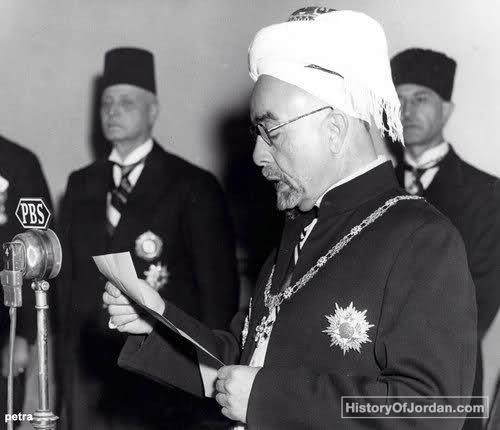
King Abdullah Bin al-Hussein giving a speech after the country’s independence on May-25-1946
Between 1928 and 1946, a series of Anglo-Transjordanian treaties led to almost full independence for Transjordan. While Britain retained a degree of control over foreign affairs, armed forces, communications and state finances, Emir Abdullah commanded the administrative and military machinery of the regular government. On March 22, 1946, Abdullah negotiated a new Anglo-Transjordanian treaty, ending the British mandate and gaining full independence for Transjordan. In exchange for providing military facilities within Transjordan, Britain continued to pay a financial subsidy and supported the Arab Legion. Two months later, on May 25, 1946, the Transjordanian parliament proclaimed Abdullah king, while officially changing the name of the country from the Emirate of Transjordan to the Hashemite Kingdom of Jordan. -

Thank you for your interest in Jordan’s History Timeline. More events about Jordan’s modern history will be posted soon! At this point, we would to thank Dr. Omar Ghul for reviewing and updating the information of this timeline.
